-
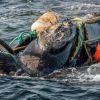 +12 +1
+12 +1US lobster put on ‘red list’ to protect endangered North Atlantic right whales
Lobster nets and pots have become such a threat to the survival of critically endangered North Atlantic right whales that the crustaceans have been “red-listed” as seafood to avoid by a major fish sustainability guide. Fewer than 340 of these whales exist today, including only 80 breeding females. The population is estimated to have dwindled by 28% over the past decade.
-
 +17 +1
+17 +1A Planetary Challenge on an Unprecedented Scale
Before our very eyes, life is changing irreversibly on our planet. According to our best scientific estimates, only 4% of the Earth’s collective mammalian biomass now belongs to species living in the wild. The remaining 96% either belongs to humans or our livestock. Countless species have disappeared in the last decades, and we know that more will follow.
-
 +16 +1
+16 +1Panda twins born in China as species struggles for survival
Twin giant pandas have been born at a breeding center in southwestern China, a sign of progress for the country’s unofficial national mascot as it struggles for survival amid climate change and loss of habitat. The male and female cubs, born Tuesday at the Qinling Panda Research Center in Shaanxi province, are the second pair of twins born to their mother, Qin Qin. Another panda, Yong Yong, gave birth to twins at the center earlier this month.
-
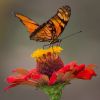 +4 +1
+4 +1More species are at risk than ever in Canada. Who will save them?
The recent addition of the monarch butterfly to the International Union for Conservation of Nature’s Red List of Threatened Species captured the attention of the media and public across North America. Rightly so. This brightly coloured butterfly is easy to recognize and one of the few endangered species you might find right in your backyard. But the monarch is just the latest to be added to a growing group of wild species found in Canada that are at risk of disappearing forever.
-
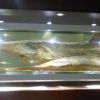 +13 +1
+13 +1Two of the Largest Freshwater Fish in the World Declared Extinct
The Yangtze sturgeon lived in its namesake river for 140 million years. Now it doesn’t. Nor does another behemoth it shared China’s longest waterway with for ages, the Chinese paddlefish. Updating its Red List of Threatened Species on Thursday for the first time in 13 years, the International Union for Conservation of Nature declared the two species, known as “the last giants of the Yangtze,” extinct.
-
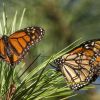 +4 +1
+4 +1Beloved monarch butterflies now listed as endangered
The monarch butterfly fluttered a step closer to extinction Thursday, as scientists put the iconic orange-and-black insect on the endangered list because of its fast dwindling numbers.
-
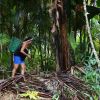 +21 +1
+21 +1Unsustainable Human Activity Pushing Species to Extinction
1 out of every 5 people around the world depend on wild species for food and income
-
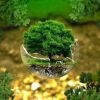 +20 +1
+20 +1Environmental protection of the earth, entrusted to artificial intelligence
One of the typical preconceived notions people have about artificial intelligence is fear. It is because of the prospect that in the near future, artificial intelligence will take away people's jobs and one day destroy human civilization as well.
-
 +3 +1
+3 +1Scientists find ‘long-extinct’ giant tortoise alive in the Galápagos
Believed to be extinct for more than a century, a rare species of giant tortoise is in fact still alive. Scientists assumed that the chelonoidis phantasticus had died out more than a century ago. The species is better known as the ‘fantastic giant tortoise’ and is native to the Galápagos Fernandina island.
-
 +14 +1
+14 +1Extinct and endangered species – in pictures
Extinction, a new book by Marc Schlossman, explores endangered and extinct species and the factors threatening them through a rare behind the scenes look at one of the most important sets of natural history collections in the world at the Field Museum in Chicago.
-
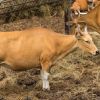 +4 +1
+4 +1How 'frozen zoos' could save vanishing animals from extinction
When Kurt Benirschke started collecting skin samples from rare and endangered animals in 1972, he didn't have a firm plan on what to do with them. As a researcher at the University of California San Diego, he believed that one day the tools would be developed to use them to save those animals. A few years later, he moved his collection to San Diego Zoo, and called it the Frozen Zoo.
-
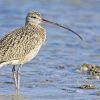 +16 +1
+16 +1Over 500 animal species haven't been seen in 50 years but they're still not officially extinct yet
Some could be lost forever, while others could live in areas difficult to reach
-
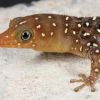 +4 +1
+4 +1One in five reptiles faces extinction in what would be a ‘devastating’ blow
More than a fifth of all reptile species are threatened with extinction, which could have a “devastating” impact on the planet, a new study warns. The largest ever analysis of the state of the world’s reptiles, published in Nature, found that 21% of reptile species are facing extinction. From lizards to snakes, such a loss could have disastrous impacts on ecosystems around the world, the study says.
-
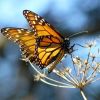 +14 +1
+14 +1Monarch Butterflies, Dozens of Other Species One Step Closer to Endangered Species Protections
In response to three lawsuits brought by the Center for Biological Diversity, the U.S. Fish and Wildlife Service agreed today to dates for decisions on whether 18 plants and animals from across the country warrant protection as endangered or threatened species under the Endangered Species Act. The Service will also consider identifying and protecting critical habitat for another nine species.
-
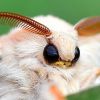 +17 +1
+17 +1The Two Drivers of Massive Insect Population Die-Off Have Finally Been Identified
They help us put food on our tables through pollination and nutrient recycling. They break down and dispose of organic waste, and are food for many animals.
-
 +12 +1
+12 +1Back from the dead? Elusive ivory-billed woodpecker not extinct, researchers say
An expedition to the forests of Louisiana say extinction of bird, last definitively seen in 1944, has been exaggerated
-
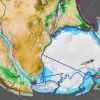 +2 +1
+2 +1Mystery of multiple extinctions in the Jurassic solved
The only halfway realistic aspect of “Jurassic Park” may be that the land was thronged with life, much of which with fangs. One can hardly generalize about the weather 200 to 145 million years ago, but the Jurassic by and large seems to have been warm and wet. The fact is that a lot of new species emerged in that time, from the lumbering stegosaurs and gigantosaurs to the earliest known proper birds – yes, your duck had ancestors back then. Tiny rodents began to emerge. In the Late Jurassic, the fearsome allosaurus arose too. And no, it isn’t a T-rex.
-
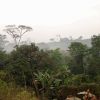 +2 +1
+2 +1‘No planet B’: Groups call for $60bn increase in annual biodiversity funding
International conservation groups are calling on countries in the Global North to provide billions more dollars every year to protect the world’s biodiversity. “The future of humanity is literally at stake. People are destroying and consuming nature at devastating rates,” Patricia Zurita, the CEO of BirdLife International, said at a virtual press conference on March 1. “Wealthy countries must support and agree to a target of providing at least 60 billion US dollars annually for international finance for biodiversity to developing countries.”
-
 +20 +1
+20 +1Koala listed as endangered after Australian governments fail to halt its decline
No recovery plan for the Australian marsupial was in place despite it being identified as a requirement nine years ago
-
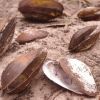 +19 +1
+19 +1They live for a century and clean our rivers, but freshwater mussels are dying in droves
Freshwater mussels are dying suddenly and in the thousands, with each mass death event bringing these endangered molluscs closer to extinction. Tragically, these events rarely get noticed. In March last year, for example, seawater was introduced into the lower Vasse River in south-western Australia to control harmful algal blooms. This killed the entire population of Carter's freshwater mussel (Westralunio carteri) in this section of the river.
Submit a link
Start a discussion




















